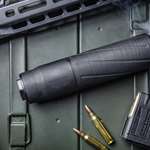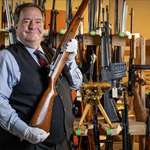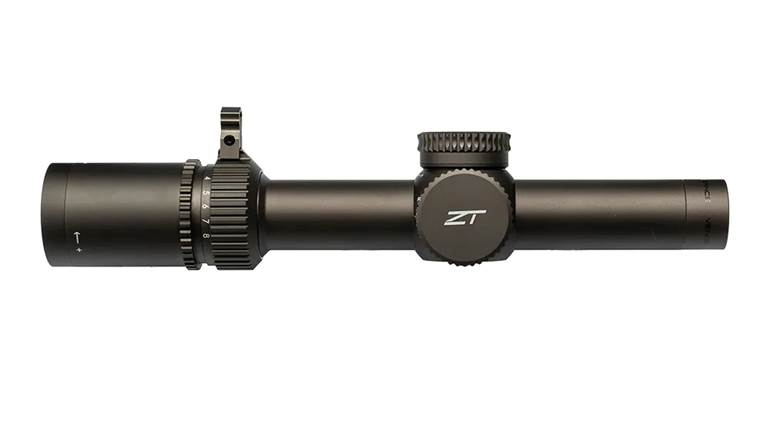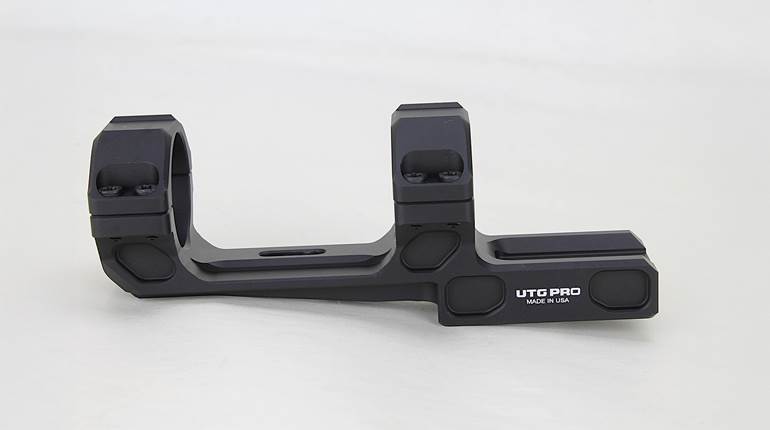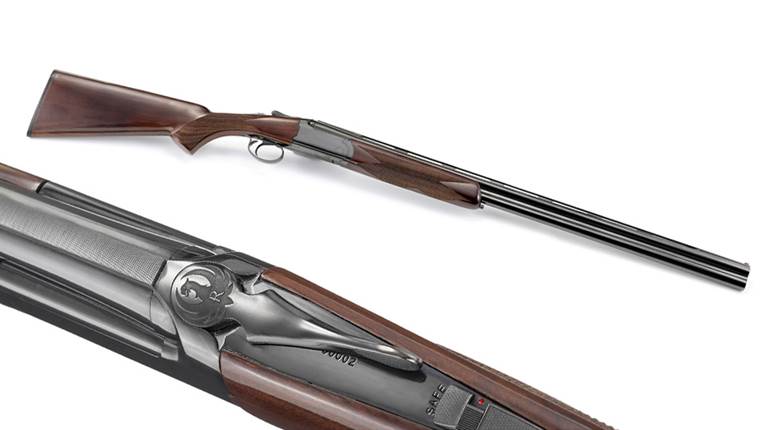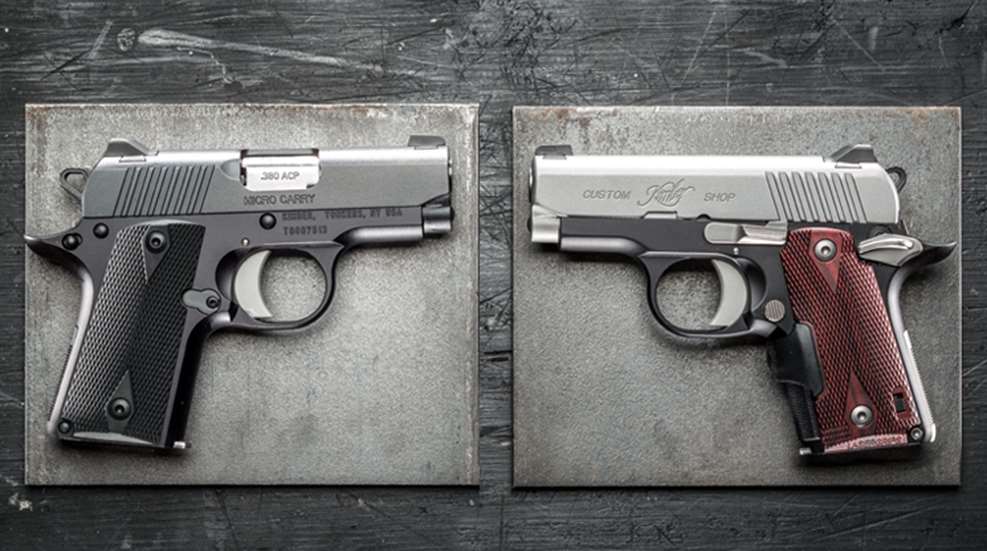
It should be obvious that a gun intended for concealed carry on the person should be small, but more importantly, it should be light. Often, however, the small, light handgun delivers ballistic performance on the light side. That forces the defensive handgunner hard up against what I call the “concealed carry conundrum”—needing to select a hideout handgun that is adequate in terminal performance, but small and light enough to be habitually carried. Books have been written about the resolution of this dilemma. The Internet forums fester with dispute, but the fact remains that those handgunners who like the self-loader often choose a .380 ACP pistol. This article concerns a line of .380s from one of America’s leading makers of M1911 pistols. The maker is Kimber; the model is the Micro.

It’s important to note that very similar pistols have been made by other companies, and usually the maker also offers full-size pistols in chamberings such as .38 Super and .45 ACP. This has gone on for decades, and I can recall look-a-likes from Spanish and American makers. If you make a big .45 pistol in the likeness of the Government Model, it makes sense to offer a small pistol that not only looks like the bigger one, but also handles like it. The M1911 pistol is the most admired and respected pistol of all time. A smaller and similar rendering of the same general contours, functions and handling stands to gain some acceptance right from the start. The growing series of Kimber Micros does that very nicely. For this story, Kimber provided samples from the line—a high-end Micro CDP (LG) and a lower-priced Kimber Micro Carry. Prices for the two run from $1,210 on the high end to $651 on the low.
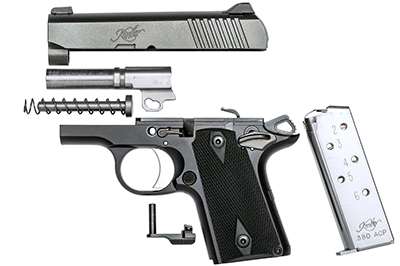
The Micro’s resemblance to the M1911 is unmistakable—the same general lines, the same Browning “step” at the lower front corner of the slide, the same rake to the grip, etc. It is not, however, correct to say that the maker just scaled down the Government Model. There are a number of places in the size-reduced Micros where M1911 features were unnecessary and therefore not used. Since all the Micros start with the same basic slide and receiver, we can generalize. It’s quite common to see .380 ACPs that are blowback in their operation. In contrast, retract the slide on any Micro and watch the rear end of the barrel drop slightly as the breech unlocks. It is just like the M1911 in this regard, a true recoil-operated, locked-breach pistol. But also look at the muzzle end of the barrel. There’s no M1911-style barrel bushing and recoil spring guide, but rather a bushingless system with a guide rod. At the rear of the receiver, the M1911 has a grip safety, but the Micro does not. So, in short, we might describe these interesting little pistols as inspired by the M1911, but not true miniaturizations thereof.
While disassembly is not the same, operation pretty much is. The Micro is a single-action semi-automatic with exposed hammer and single-column magazine of six .380 ACP cartridges. Upon firing, the slide retracts and the barrel unlocks from it. An internal extractor pulls the fired case from the chamber and a receiver-mounted ejector causes it to be flung out the ejection port. The slide cocks the hammer and, under force of the recoil spring, moves forward, stripping the top round from the magazine and feeding it up the barrel ramp and under the hook of the extractor. As the slide closes, the round is fully chambered and the barrel returns to a locked position. Sound familiar?
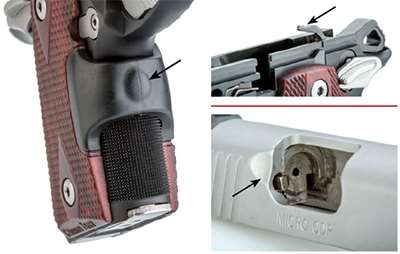
In looking at the individual models, let’s begin with the Micro Carry, the basic model in the series. While it is a no-frills version, it remains a pretty handy little pocket pistol just as it comes from the box. Actually, it comes in a rather plain cardboard carton, which contains the gun in a tidy, gray, zippered and padded gun rug. In my opinion, this is the way all handguns should be delivered. The Micro Carry is a dull black (stainless upper, aluminum lower), with black rubber grips in the traditional double-diamond pattern. The sights are dovetail-installed into the slide and are therefore drift-adjustable. On this low-end version of the Micro, the sights are plain black. The gun may be small, but the sights are just the same as on its larger brethren, at least in their sighting surfaces. That’s welcome, since the maker designed the sights to be used for their intended purpose and resisted the urge to miniaturize them with the rest of the gun.
Operation of the gun is typical M1911-style, although Micro controls are slightly smaller versions of those found on the great gun. The slide lock, magazine catch and thumb safety have the familiar contours and work the same. In the case of the miniature thumb safety, Kimber even worked an interesting extended shape into that vital control. Retained by a pair of Allen screws, the rubber stocks have molded-in checkering, which causes them to stay put in the hand after extended shooting. On the bottom edge of the receiver—at the magazine well—the Micro Carry has a very trim little beveled edge that makes speedy magazine insertion a tad smoother. All in all, it is a very appealing little gun—simple and direct.
On the other hand, the Kimber Micro CDP (LG) is multi-faceted and somewhat fancy. It’s a well-equipped little pocket pistol that looks like the Micro Carry, but has a higher level of sighting equipment and cosmetic finish. On the Micro CDP, we have a two-tone gun with a stainless-steel slide and barrel and a flat-black anodized receiver. The iron sights are flat-finished, but the trigger, slide lock, magazine catch, grip screws and mainspring housing are silver-finished. Also, the thumb safety is stainless and, would you believe it, it’s a bilateral unit. That means a control paddle on the right side, as well as the left. For those shooters who like the two-tone look, the black and silver colors all over the little pistol are appealing.
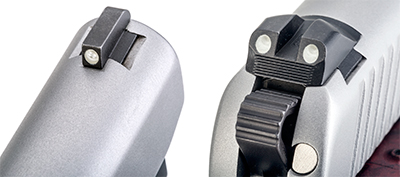 Sighting must have been a priority when the specifications were written for the Micro CDP (LG). The sights are the same size and shape as the ones on the Micro Carry, however, the maker chose to install tritium inserts in the sights, two in the rear and one in the front. Those glowing dots line up nicely when establishing a proper sight picture. And if that were not enough, Kimber also outfits this model with a Crimson Trace LaserGrip, hence the (LG) designation. Every time I get a gun with this feature, I marvel at the engineering that goes into it. A strong laser has been fitted into a pair of wood-grained synthetic stocks that are connected across the frontstrap by a narrow rubber bridge. The off-on pressure button is in the center, right under the base of the handgunner’s middle finger. Another sliding catch at the lower rear corner of the left grip powers the system. When powered and in the shooter’s positive grasp, pressure on the frontstrap button lights up a laser worked into the top edge of the right grip panel. The projected laser beam may be adjusted to match the point of impact at a given distance. It is a remarkably clean installation.
Sighting must have been a priority when the specifications were written for the Micro CDP (LG). The sights are the same size and shape as the ones on the Micro Carry, however, the maker chose to install tritium inserts in the sights, two in the rear and one in the front. Those glowing dots line up nicely when establishing a proper sight picture. And if that were not enough, Kimber also outfits this model with a Crimson Trace LaserGrip, hence the (LG) designation. Every time I get a gun with this feature, I marvel at the engineering that goes into it. A strong laser has been fitted into a pair of wood-grained synthetic stocks that are connected across the frontstrap by a narrow rubber bridge. The off-on pressure button is in the center, right under the base of the handgunner’s middle finger. Another sliding catch at the lower rear corner of the left grip powers the system. When powered and in the shooter’s positive grasp, pressure on the frontstrap button lights up a laser worked into the top edge of the right grip panel. The projected laser beam may be adjusted to match the point of impact at a given distance. It is a remarkably clean installation.
Although the Kimbers are pretty light, at about 13 ozs., they shoot rather easily. This invites lengthy shooting sessions. Both guns were brand new at the beginning of our shooting sessions and were like virtually all of the current crop of .380s. They require a break-in period before they can enter service as defensive arms. The most typical malfunction was failure to go into battery. With the two Micros, this was pretty well resolved with heavy lubrication and lots of shooting. By the time I began the formal accuracy evaluation, as tabulated nearby, the guns were performing correctly.
While I have made much of the gun’s relationship with the true M1911 pistols, there is one feature that might be a little better. On full-size Colts and clones of Colts, activating the thumb safety means that the slide is held in place. As long as that safety is up, you cannot rack the slide. There are times when it might be a good thing to have a positive safety at work while you are clearing malfunctions. On the little Micros, you can put the safety on and rack the slide all you need. It is one of those little things that does no harm, but can occasionally be useful—sort of a “can’t hurt, might help” feature.
When it comes to shooting the guns for pure accuracy, I did not have inserts for the Ransom Rest (they don’t make them), so I was forced to shoot from sandbags. These little pistols were never intended for this kind of work, and triggers listed at 7 lbs.—and actually measuring a bit heavier, with considerable creep—are hard to shoot. I believe that the pure mechanical accuracy of these little guns might be a little better than listed, but the results posted here are what I achieved.
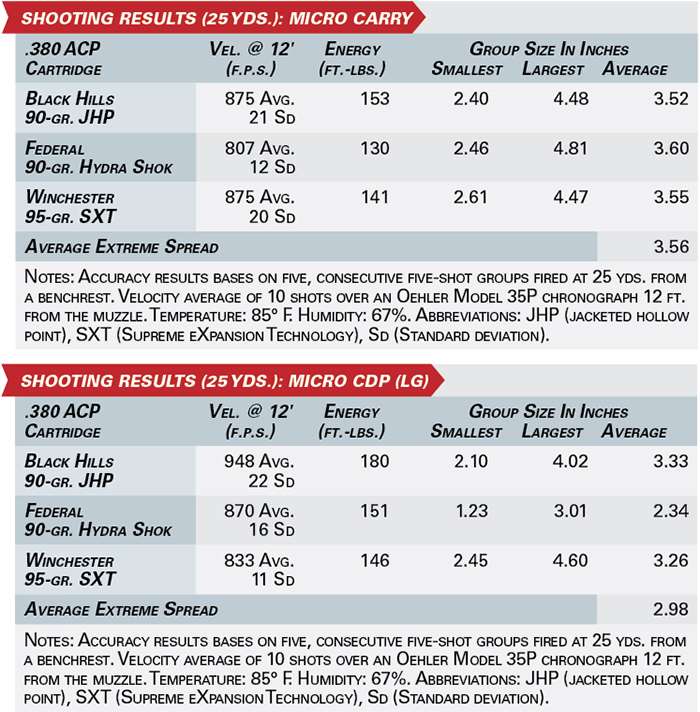
It seems to me that evaluating Kimber’s Micro line is a matter of keeping things in perspective. They are purely defensive pistols and intended for close encounters. Match shooting is not in the cards, but the guns are reliable after breaking in. The guns load, unload, fire and function like M1911 pistols, and there is a lot to be said for familiarity in operating drill. In the final analysis, the appeal of the Kimber Micro is more subjective than objective. They are handsome little miniatures that cry to be picked up, fired and enjoyed. I am going to buy one of these two and see what it looks like after a good pistolsmith does his thing. I have traveled that route with other guns; why not the Micros?
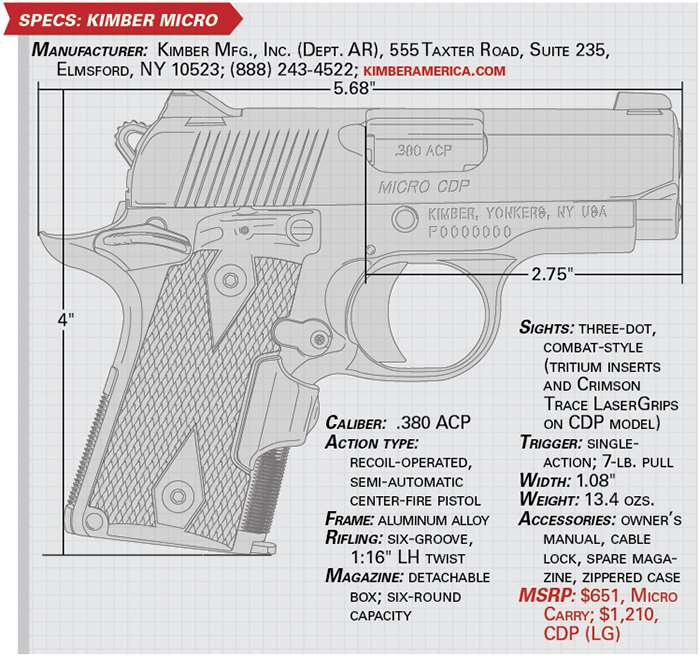













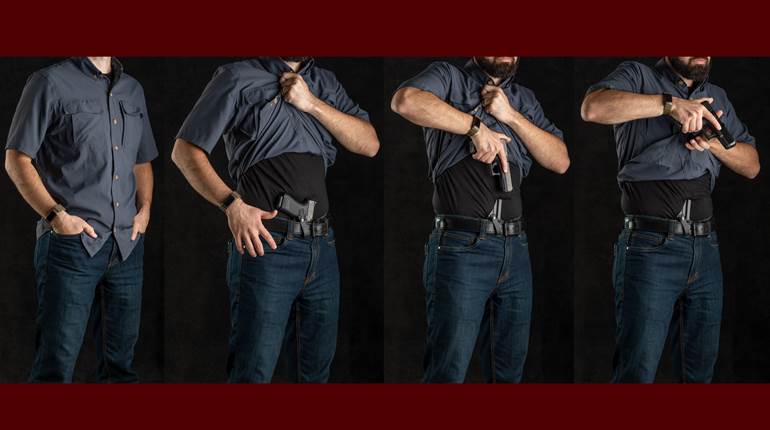

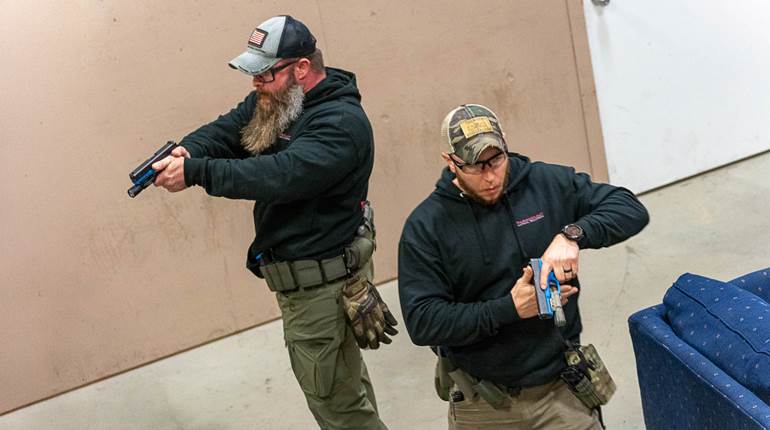

![Winchester Comm[94]](/media/1mleusmd/winchester-comm-94.jpg?anchor=center&mode=crop&width=770&height=430&rnd=134090756537800000&quality=60)
![Winchester Comm[94]](/media/1mleusmd/winchester-comm-94.jpg?anchor=center&mode=crop&width=150&height=150&rnd=134090756537800000&quality=60)

